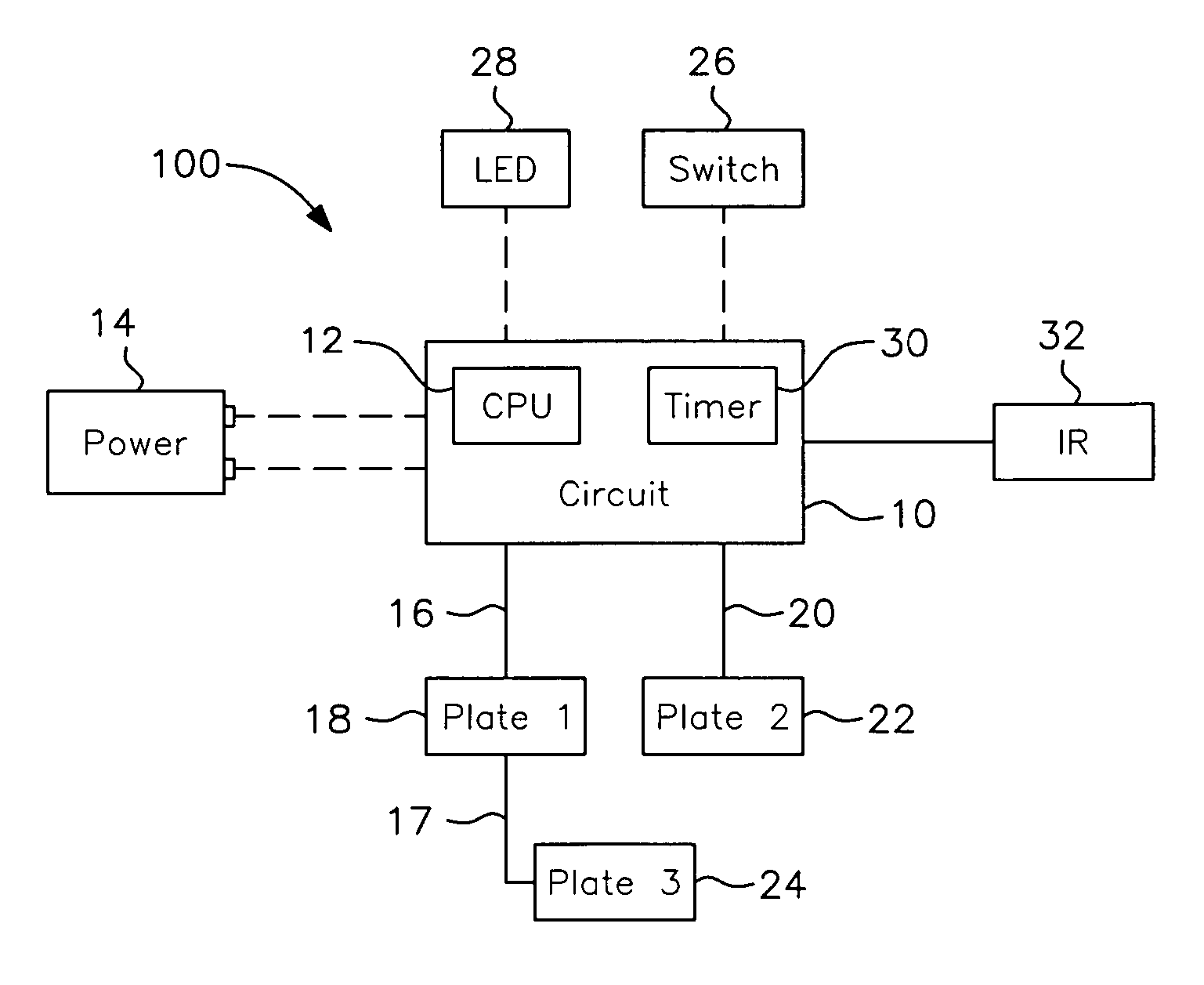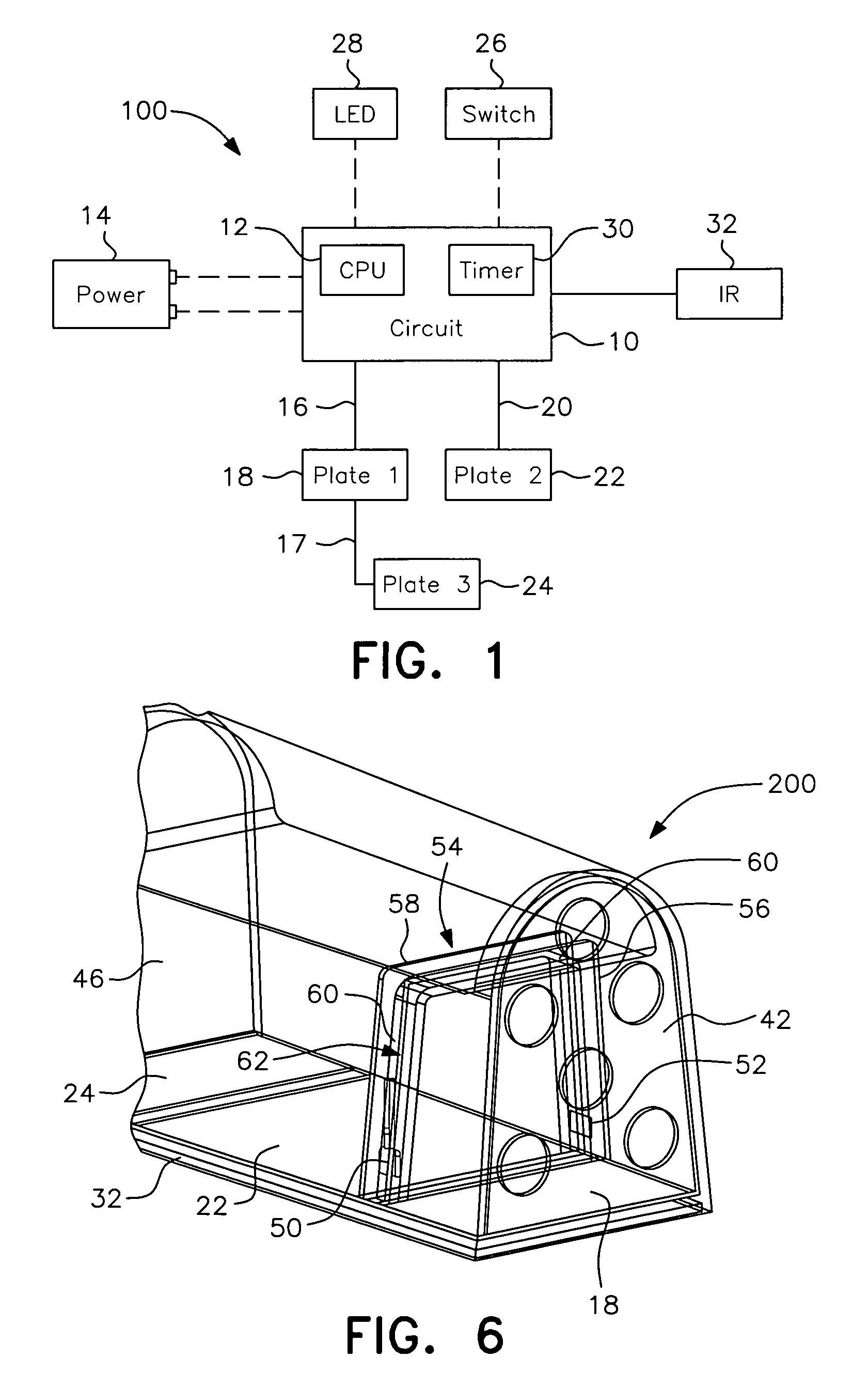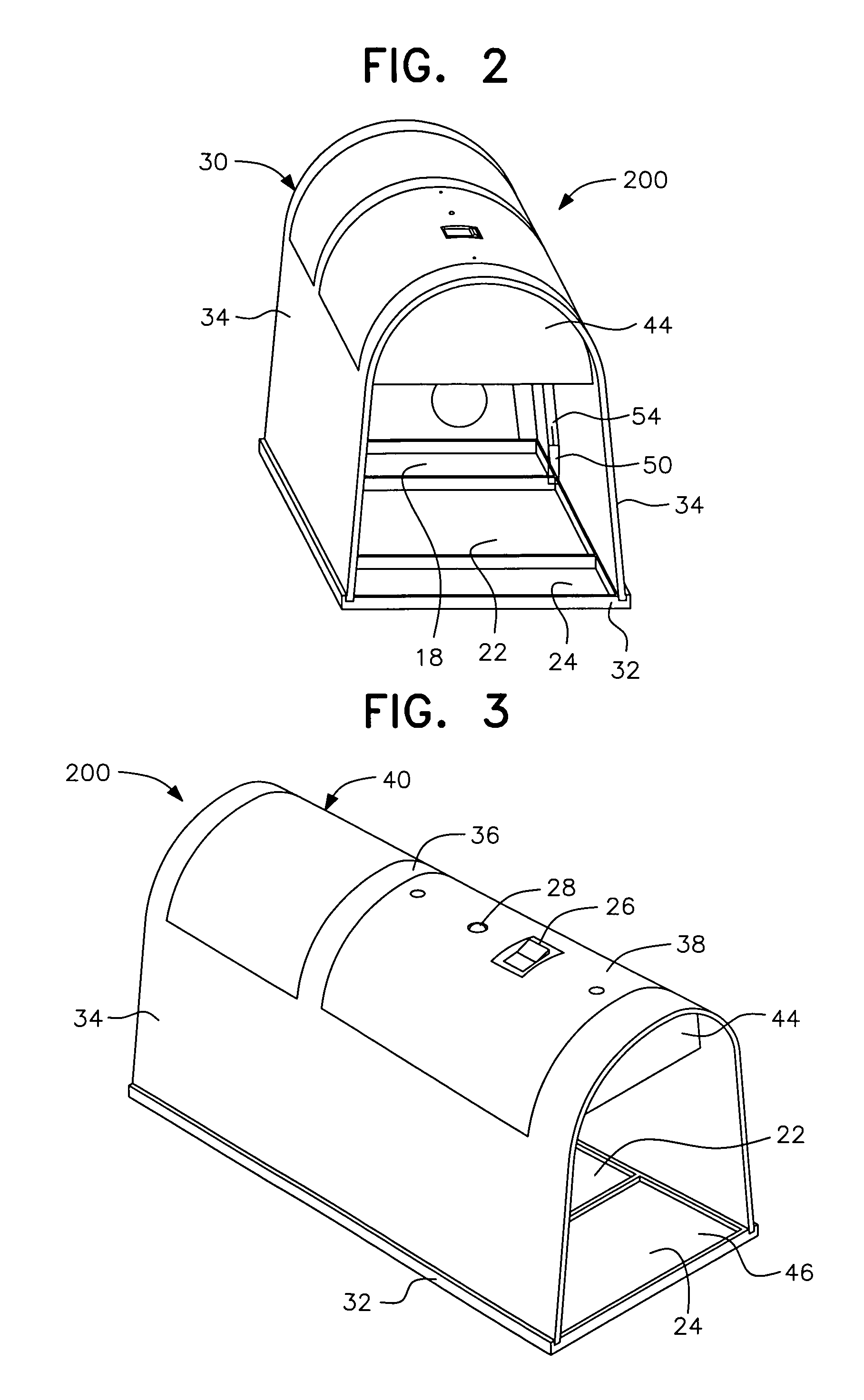Rearming electronic animal trap with infrared sensor and multiple-killing-plate configuration
a technology of infrared sensor and electronic animal trap, which is applied in the field of electric or electronic animal trap, can solve the problems of increased electrocution capability, decreased pest escape probability, waste of effort by exterminator personnel or other users, etc., and achieves the effect of quick and efficient electrocution of a targeted animal, low cost and simple construction
- Summary
- Abstract
- Description
- Claims
- Application Information
AI Technical Summary
Benefits of technology
Problems solved by technology
Method used
Image
Examples
Embodiment Construction
[0030]Although only one preferred embodiment of the invention is explained in detail, it is to be understood that the embodiment is given by way of illustration only. It is not intended that the invention be limited in its scope to the details of construction and arrangement of components set forth in the following description or illustrated in the drawings. Also, in describing the preferred embodiments, specific terminology will be resorted to for the sake of clarity. It is to be understood that each specific term includes all technical equivalents which operate in a similar manner to accomplish a similar purpose.
[0031]FIG. 1 is a block diagram of the rearming circuit components, generally designated by the reference numeral 100, according to the present invention. The circuit components 100 include a high-voltage output circuit 10 controlled by a central processing unit (CPU) 12 and electrically connected to a power supply 14. The CPU 12 may be embodied as a standard 8-bit micro c...
PUM
 Login to View More
Login to View More Abstract
Description
Claims
Application Information
 Login to View More
Login to View More - R&D
- Intellectual Property
- Life Sciences
- Materials
- Tech Scout
- Unparalleled Data Quality
- Higher Quality Content
- 60% Fewer Hallucinations
Browse by: Latest US Patents, China's latest patents, Technical Efficacy Thesaurus, Application Domain, Technology Topic, Popular Technical Reports.
© 2025 PatSnap. All rights reserved.Legal|Privacy policy|Modern Slavery Act Transparency Statement|Sitemap|About US| Contact US: help@patsnap.com



